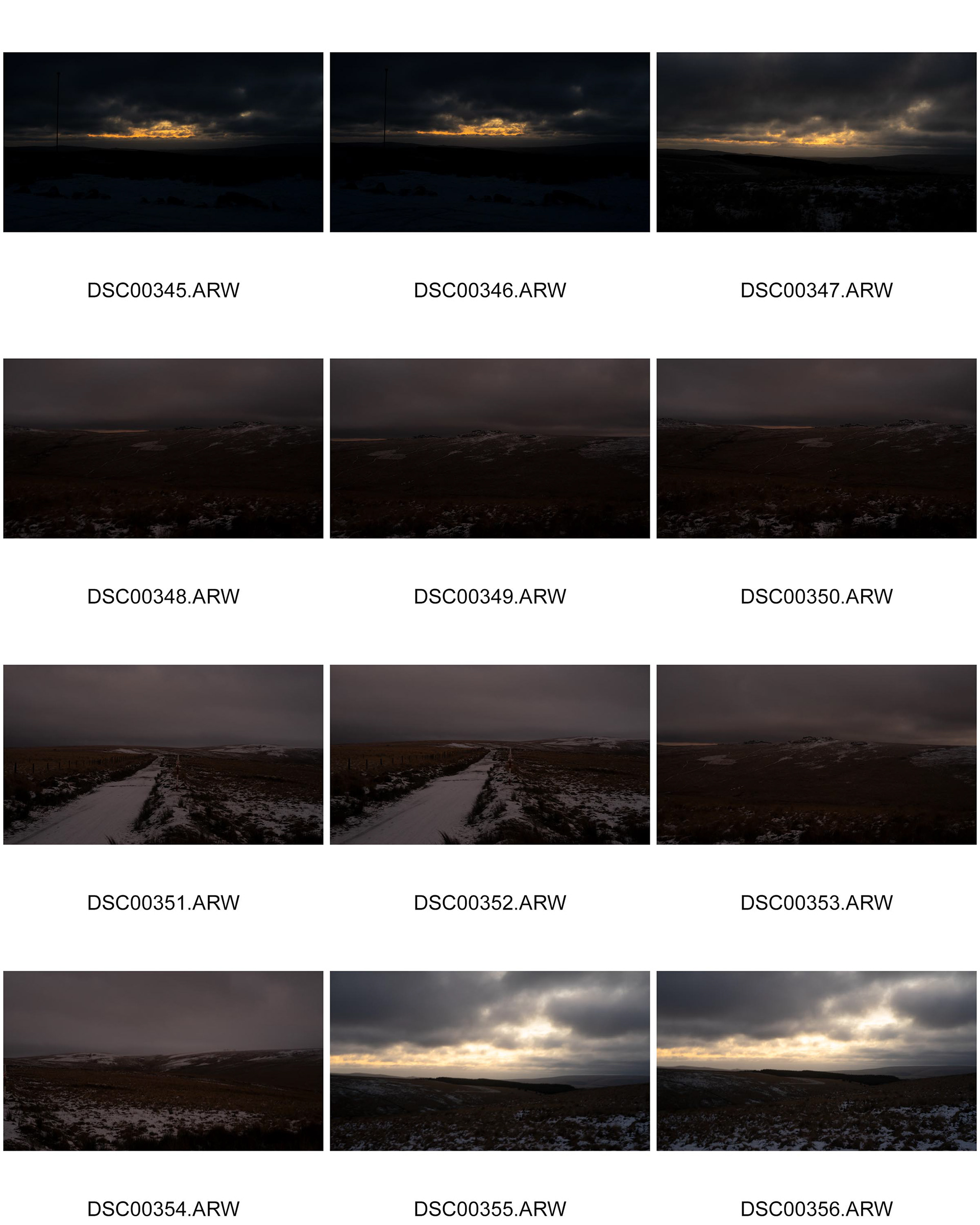
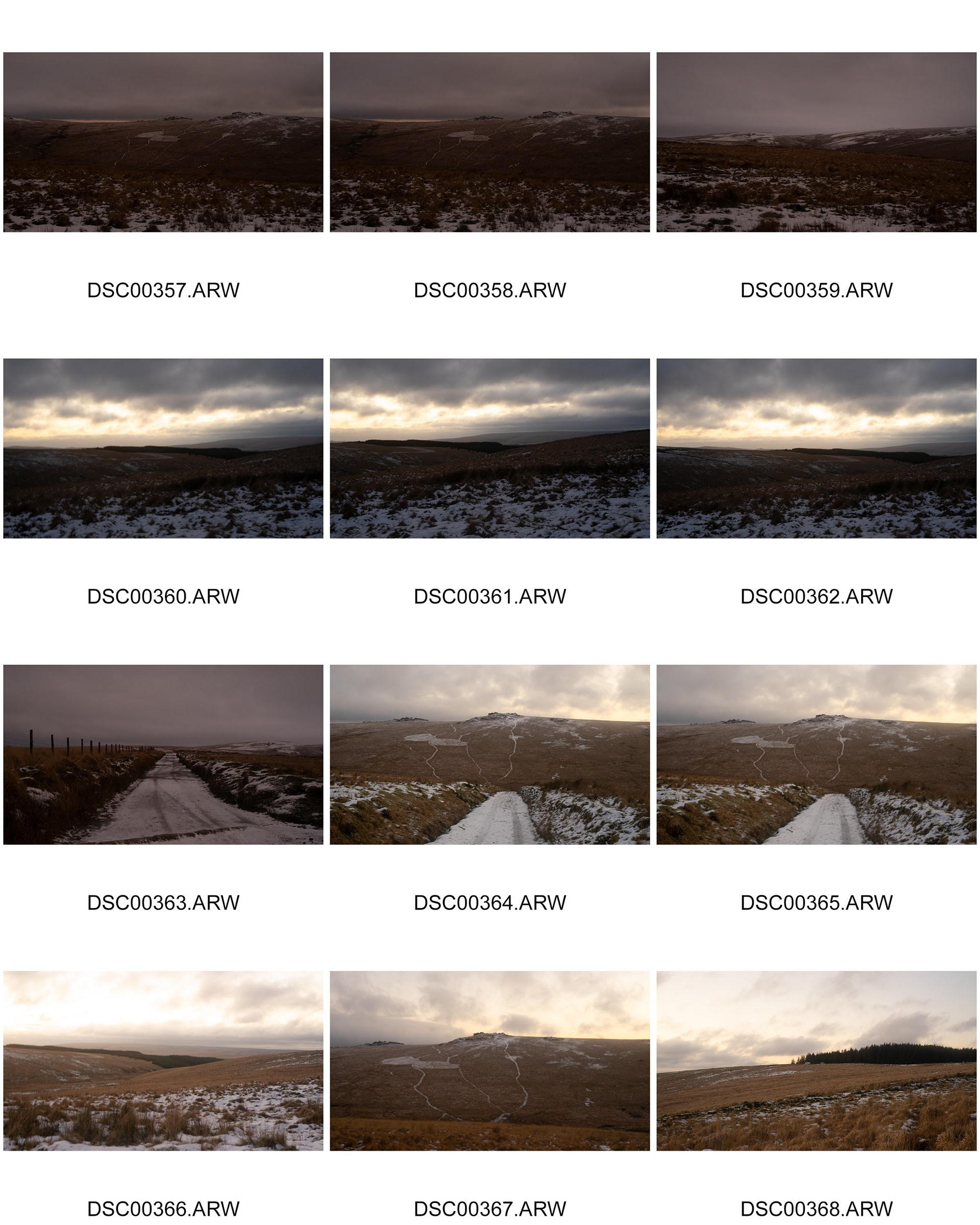
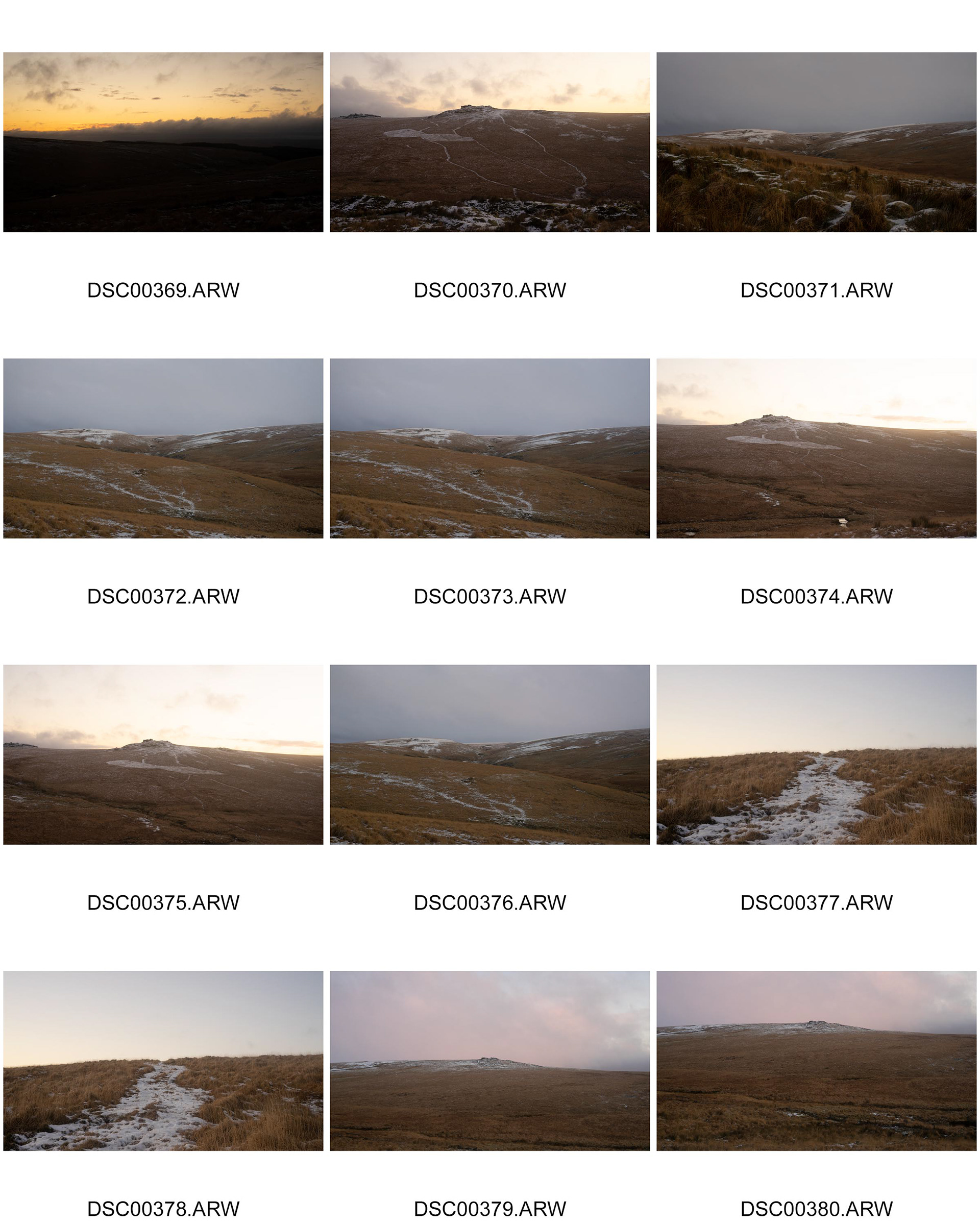
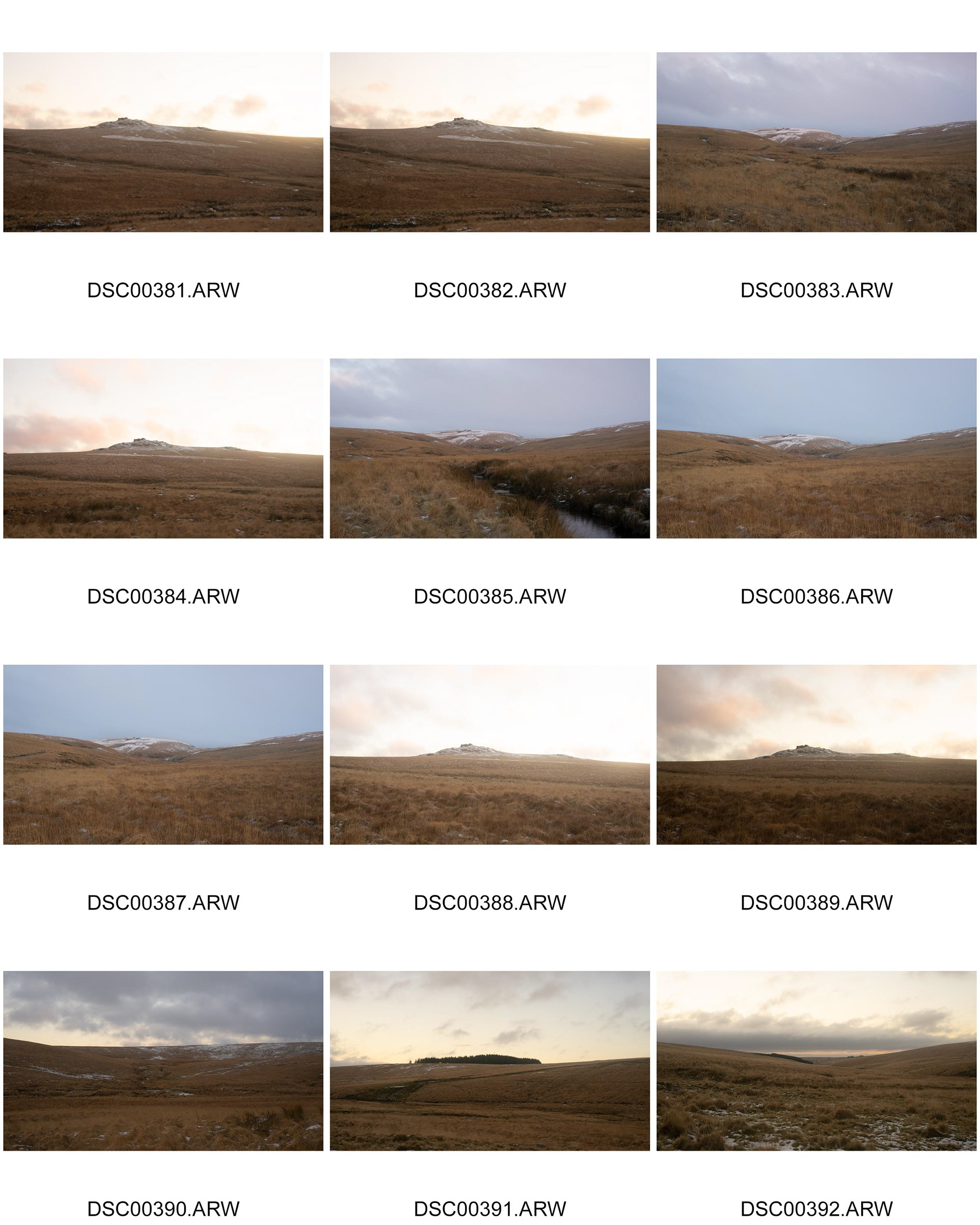
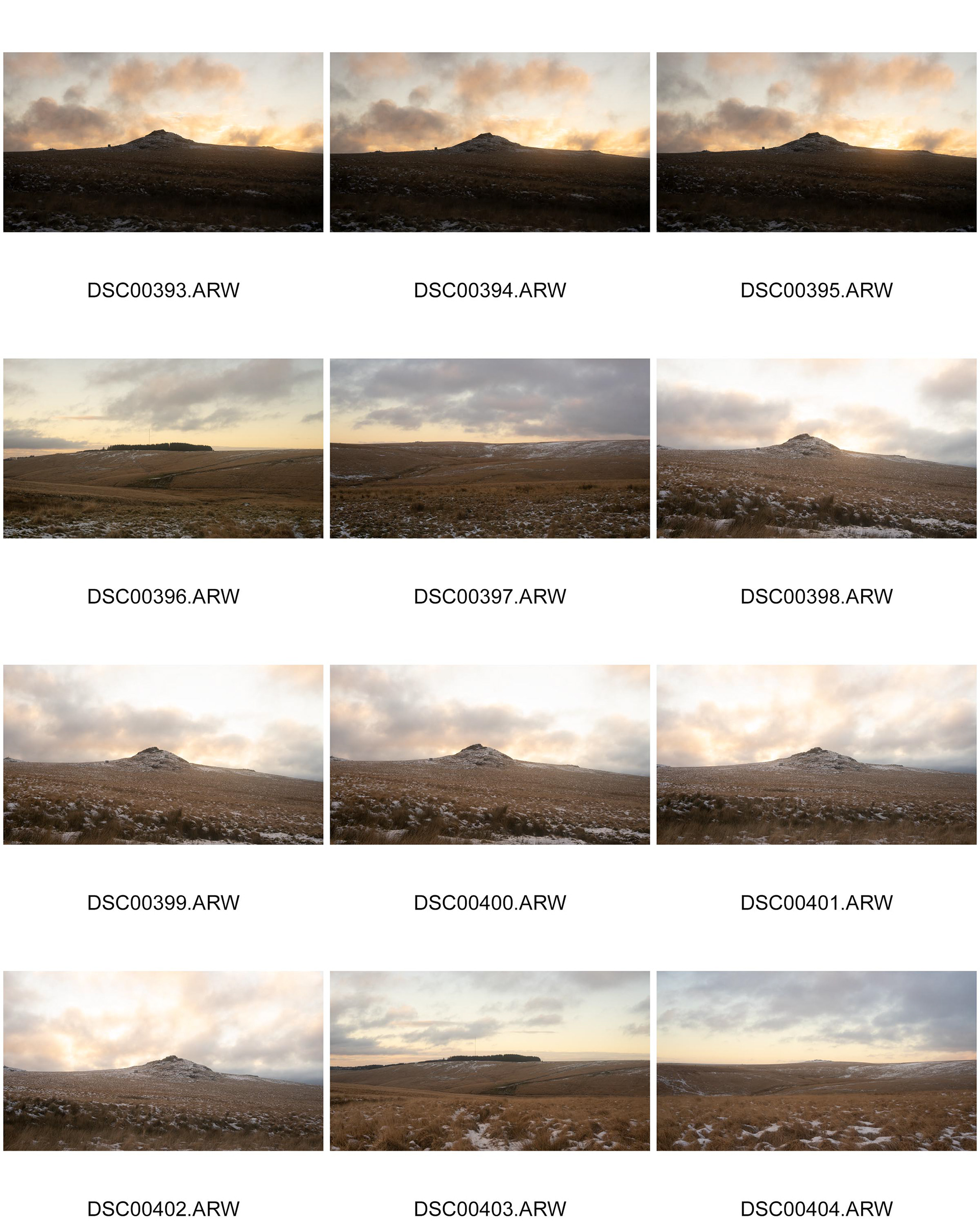
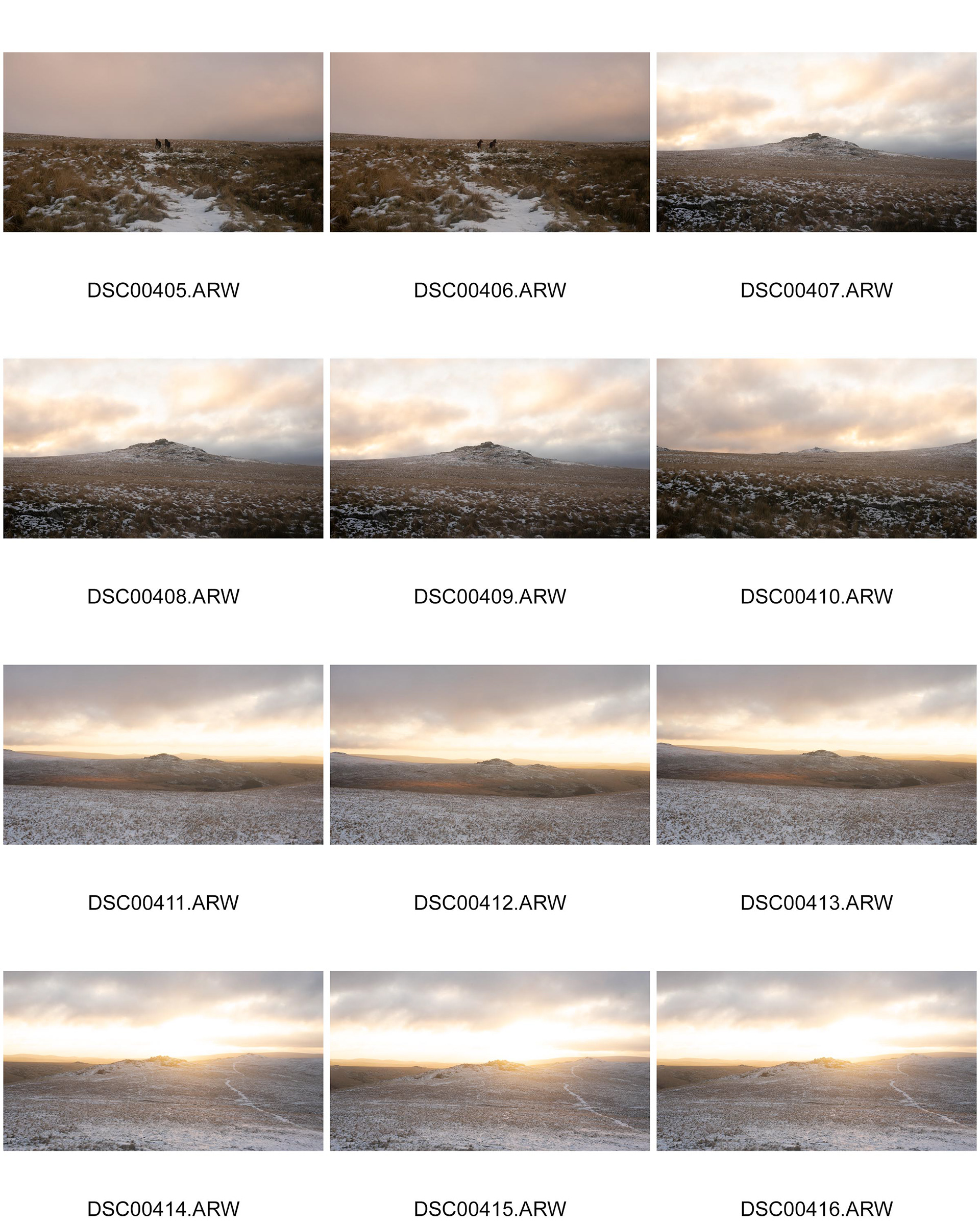
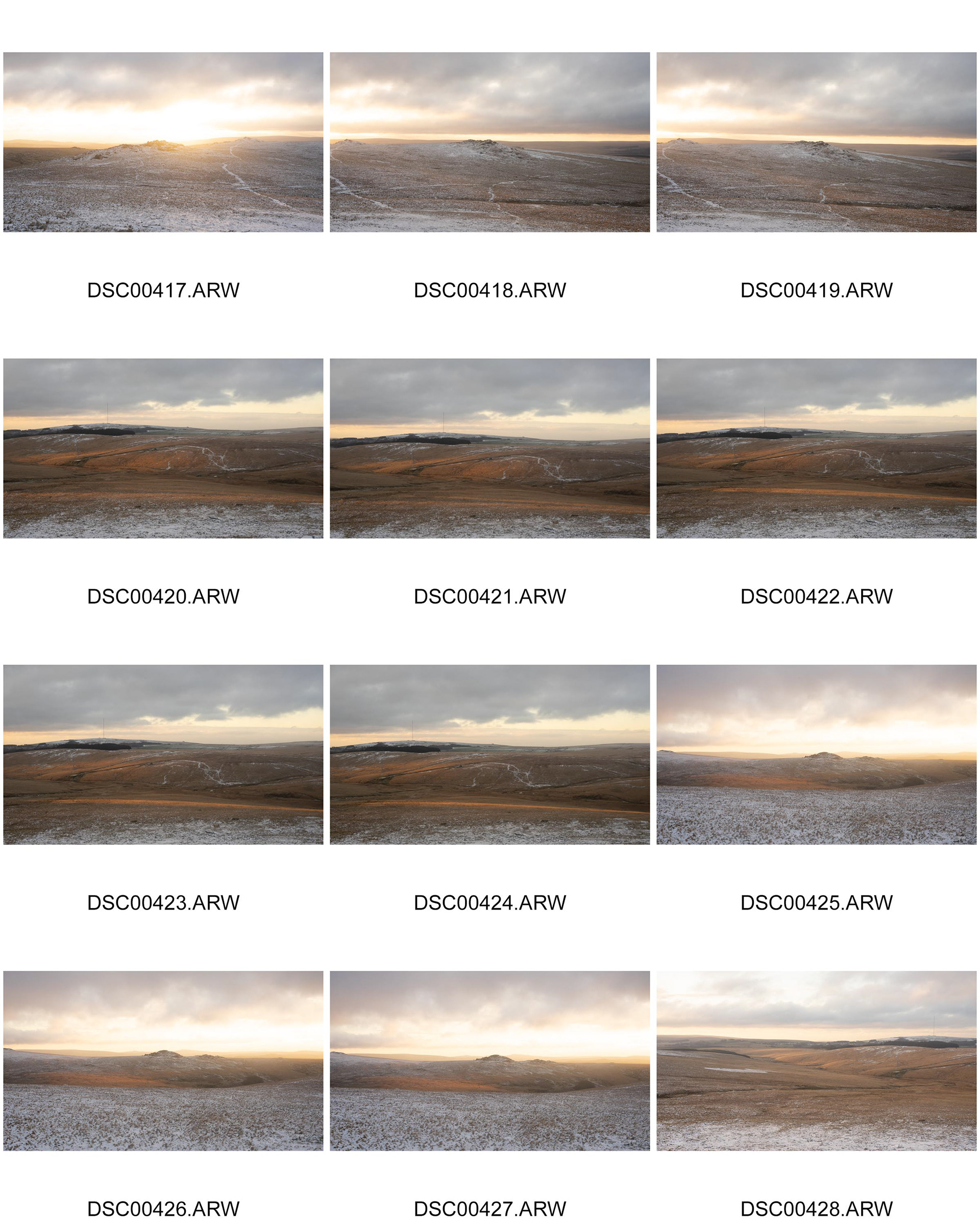
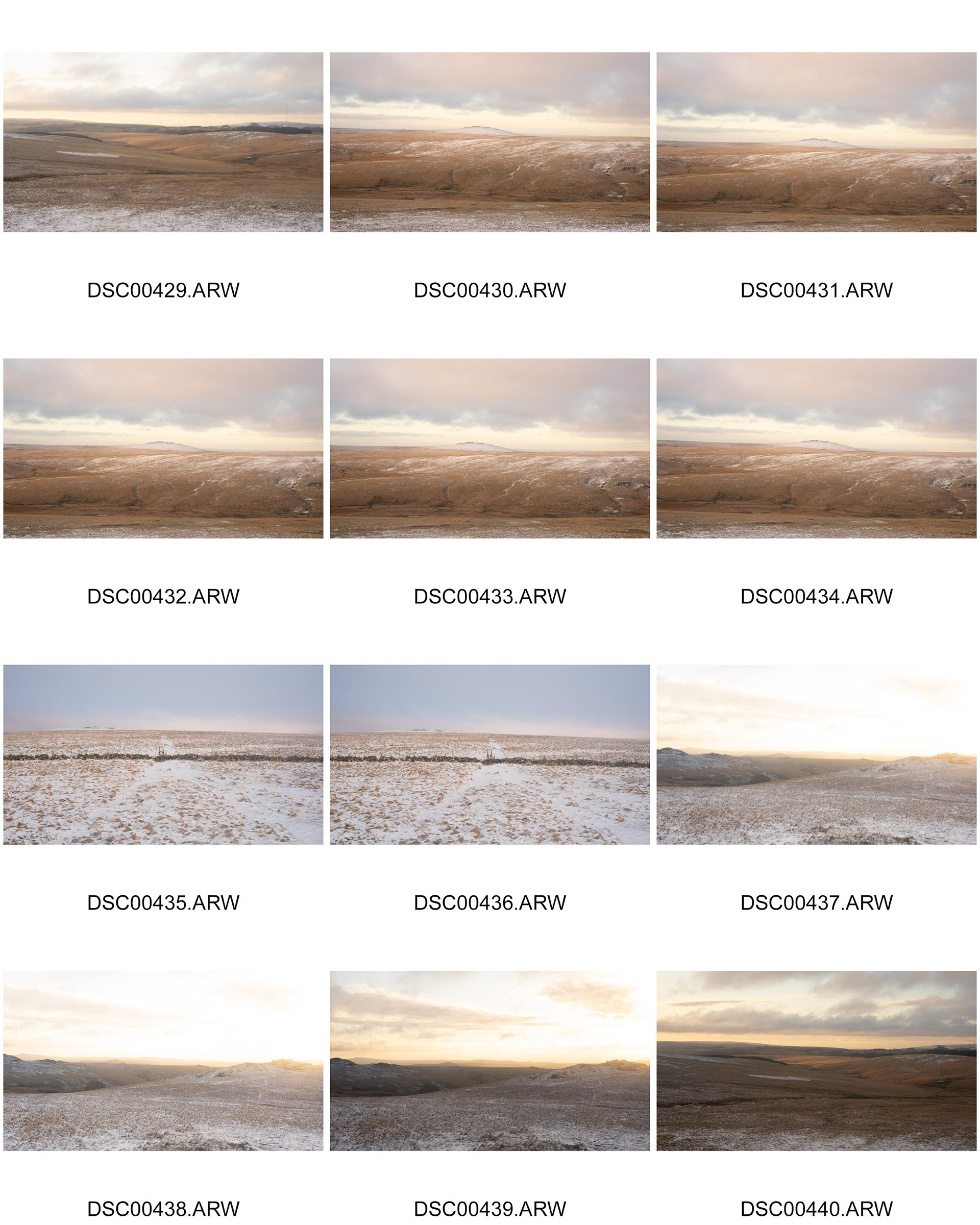
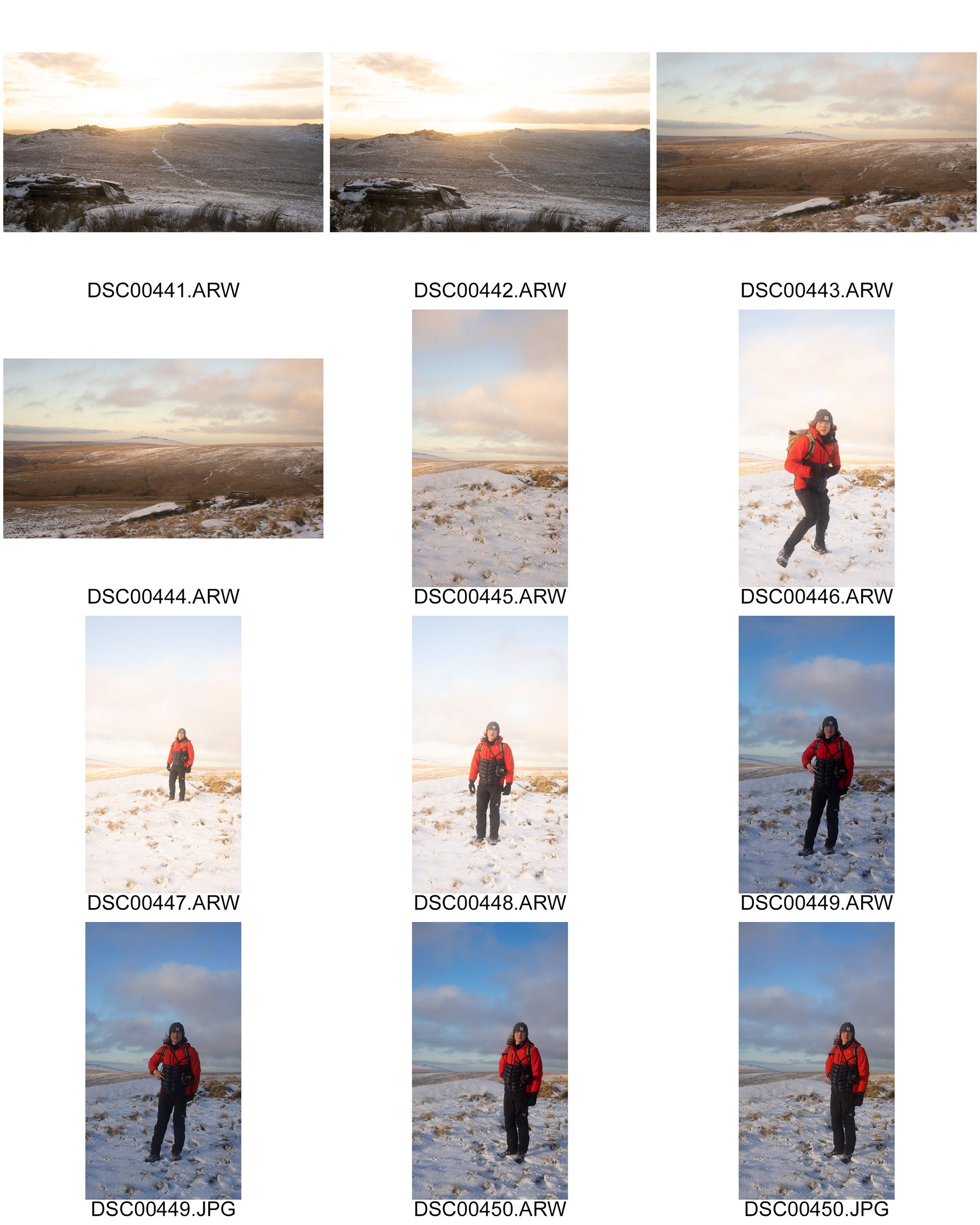
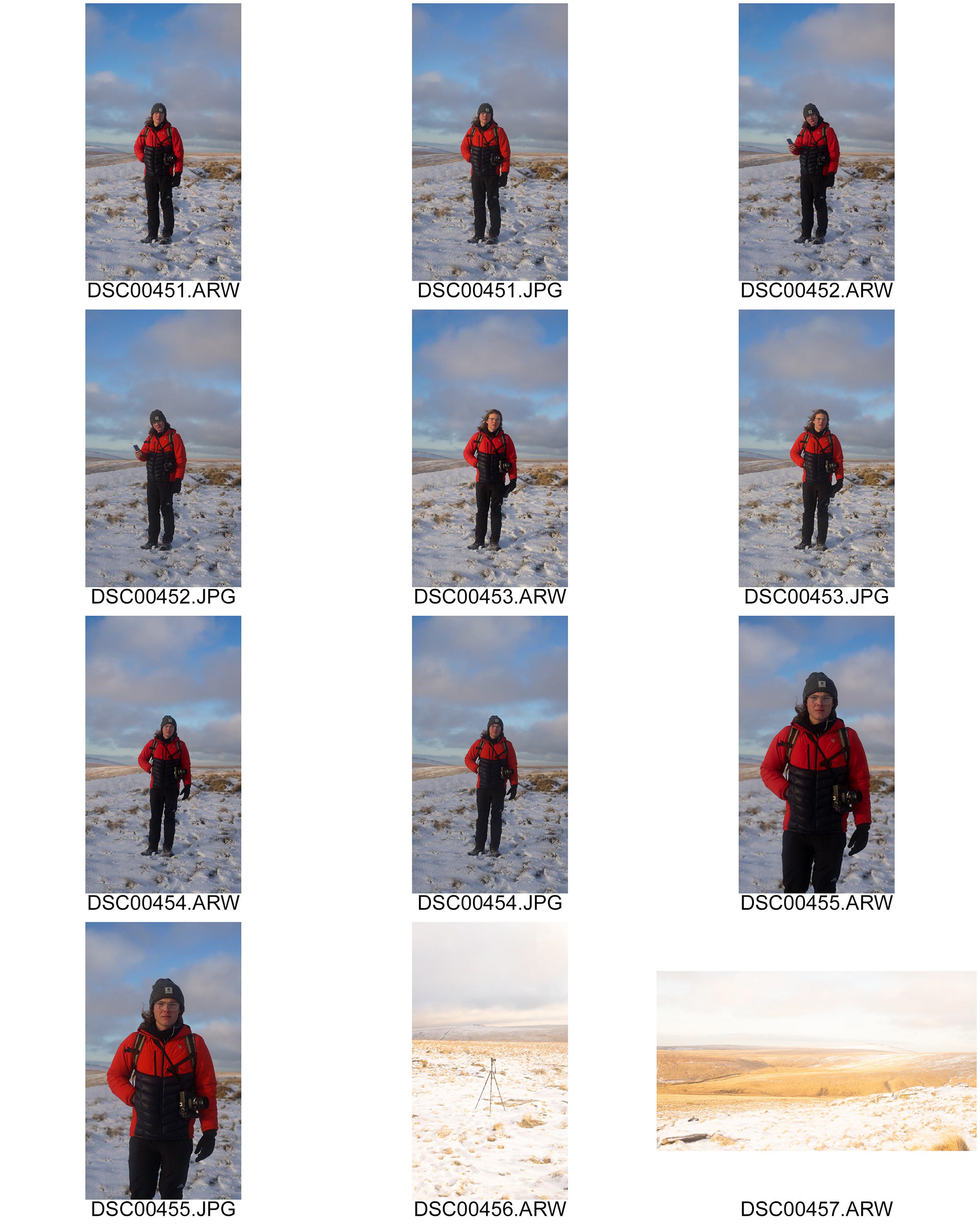
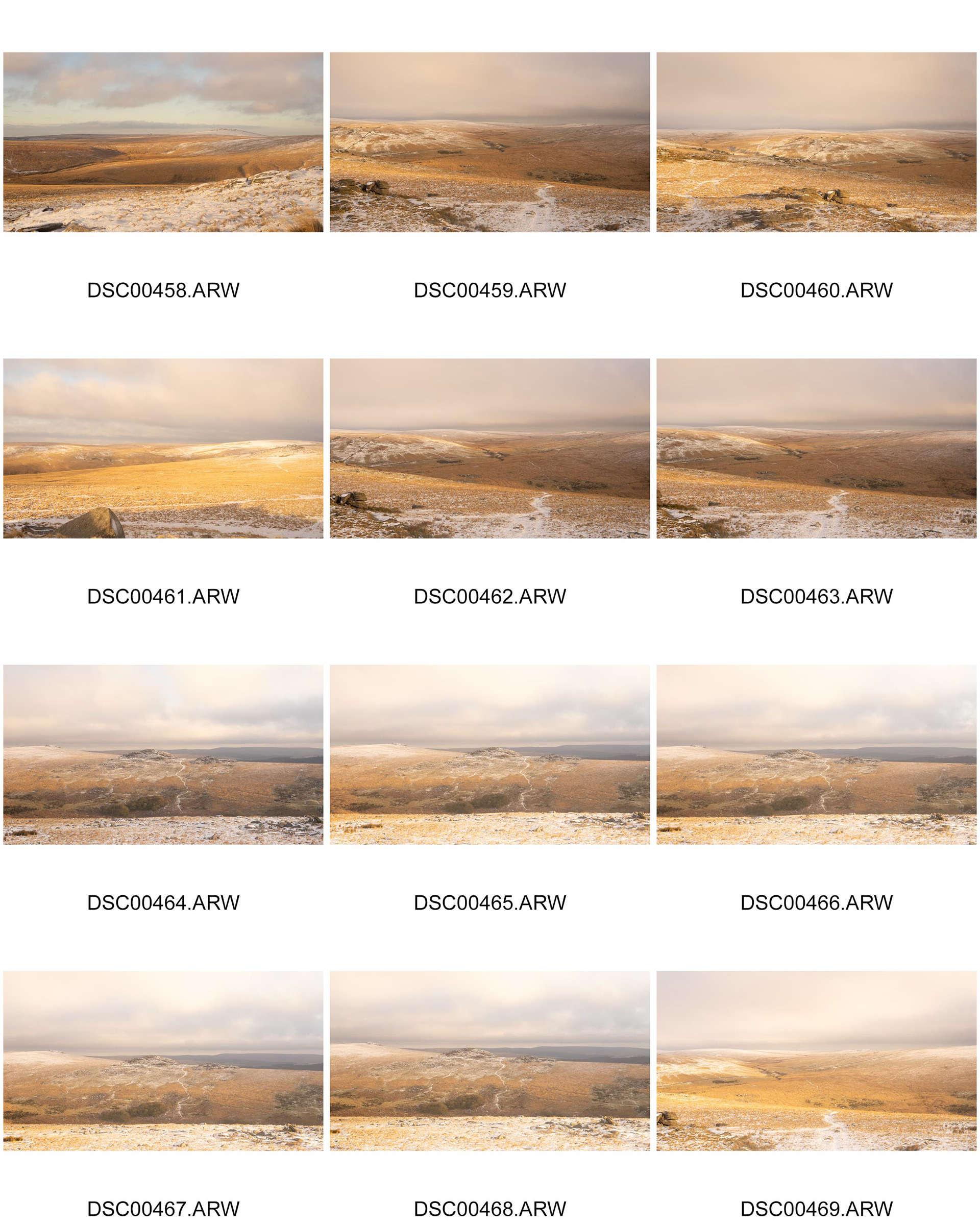
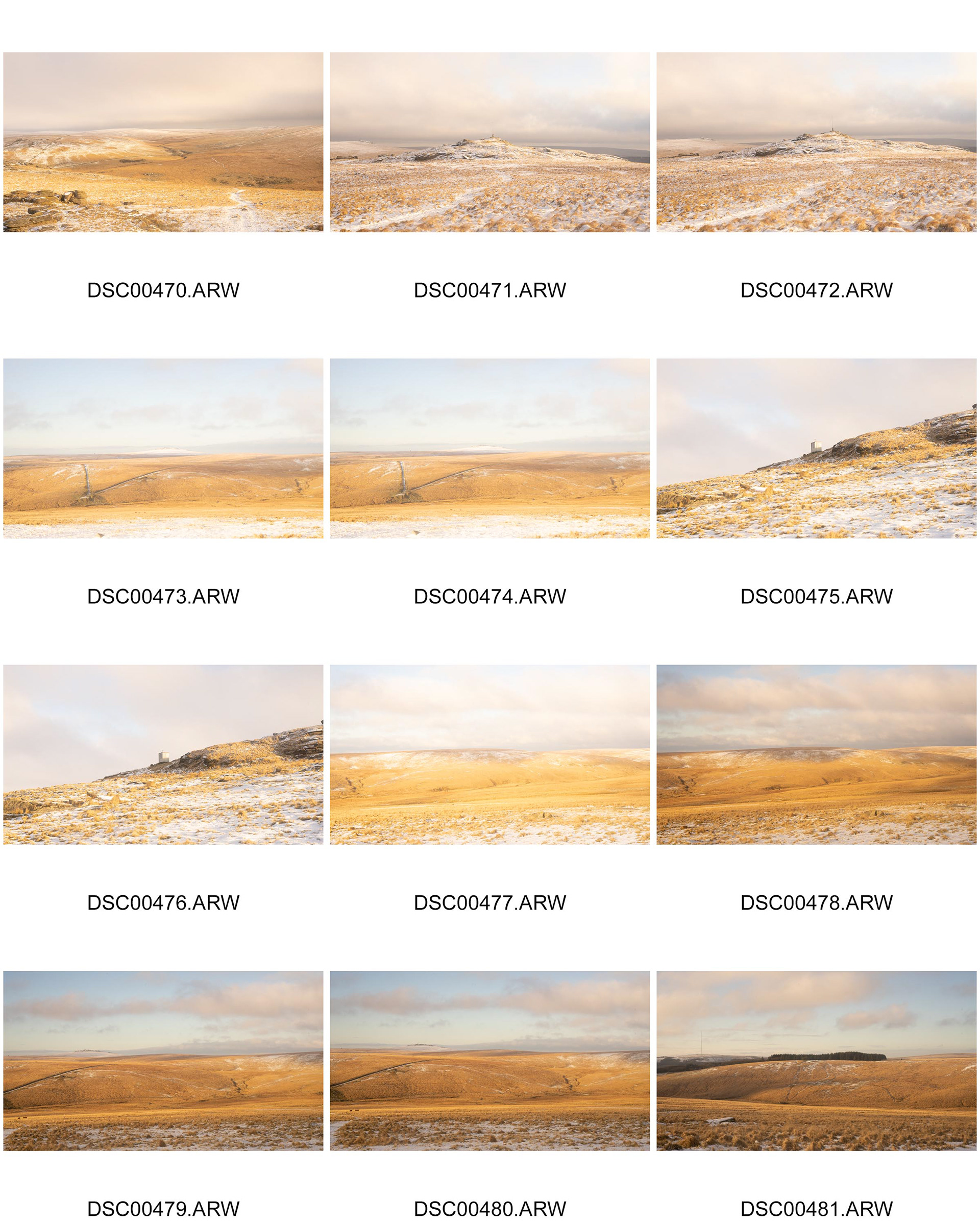
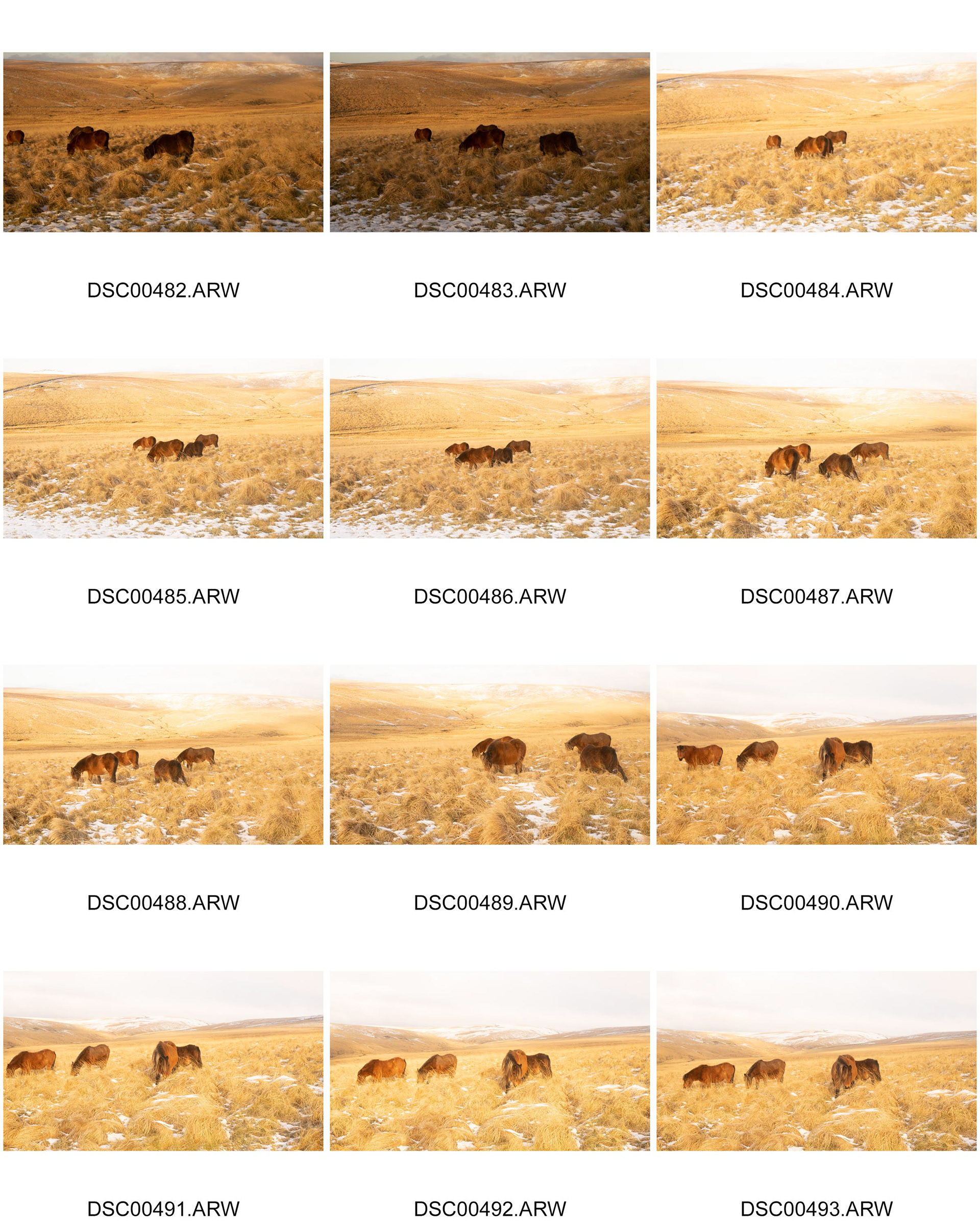
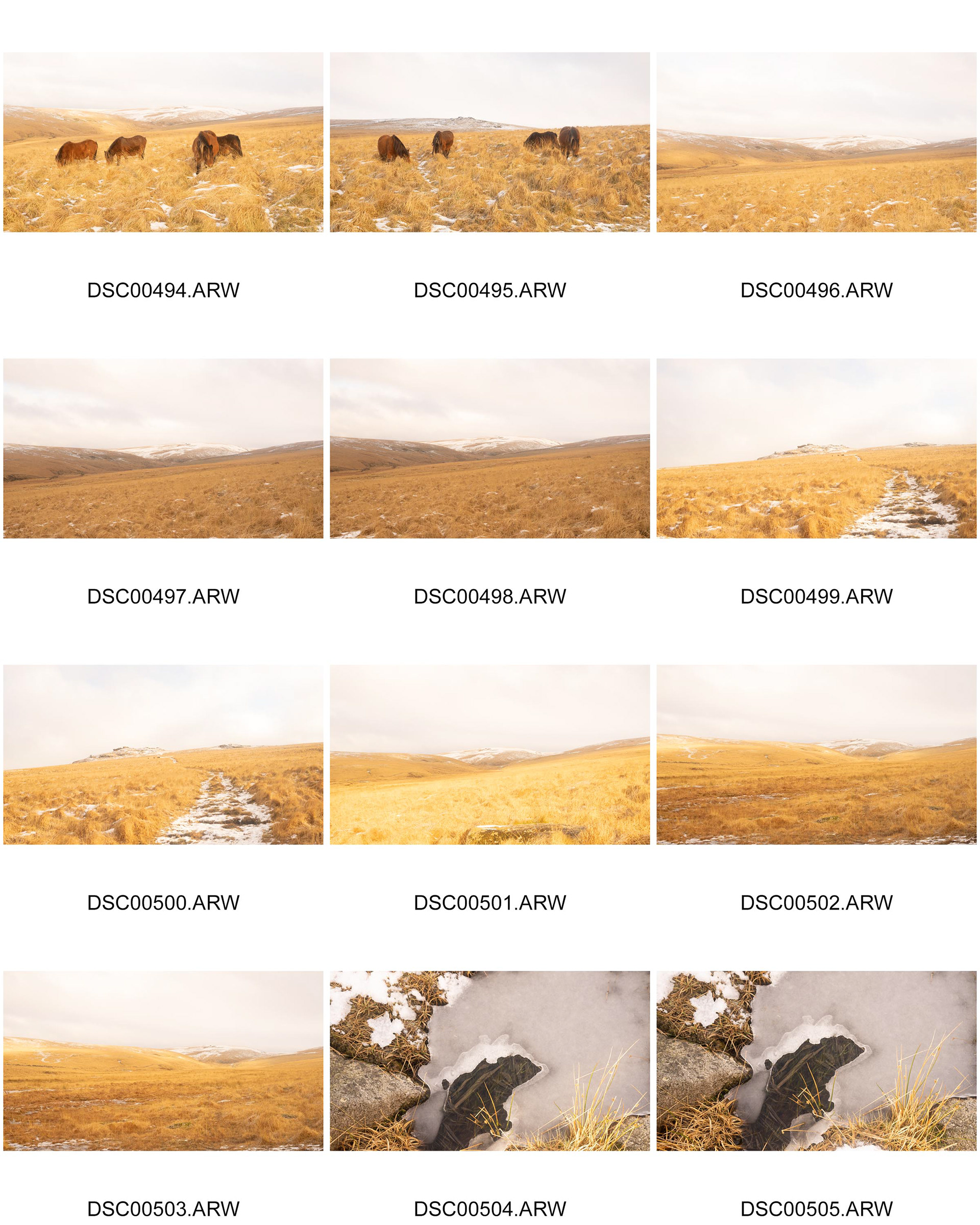
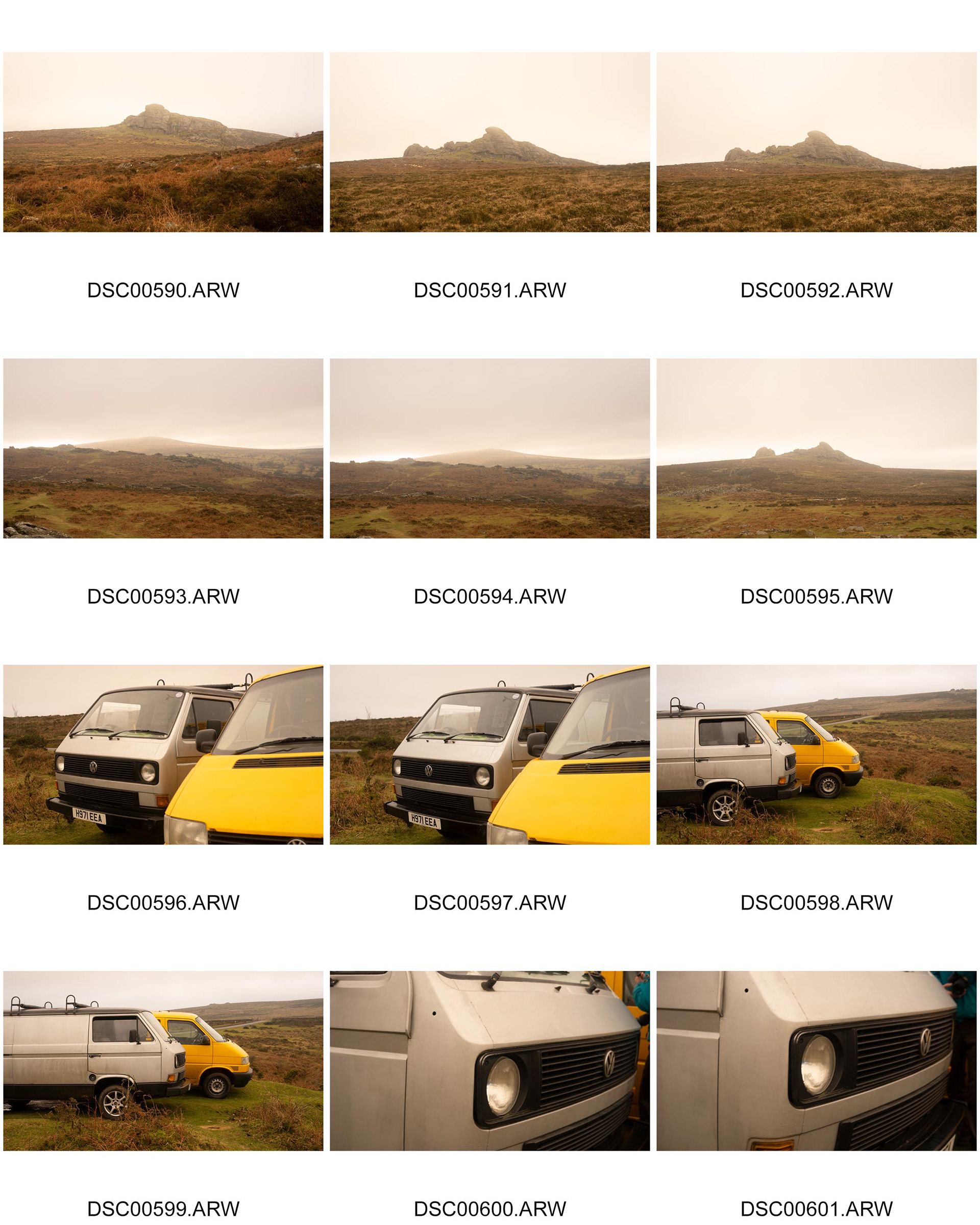
During my trip up to Dartmoor, I was blessed with a touch of snow on the ground. I left my house at 6.30am so that I could capture the sun rising and the morning light hitting the vast landscape of the Moors. I drove towards Princetown and parked up at Holming Beam, to then do a circular hike around some of the tours in the area. After spending a night on the Moors and lower down where there was no snow I shot some images around the Haytor quarry area on what was a rather over cast day.
Digital Photographs
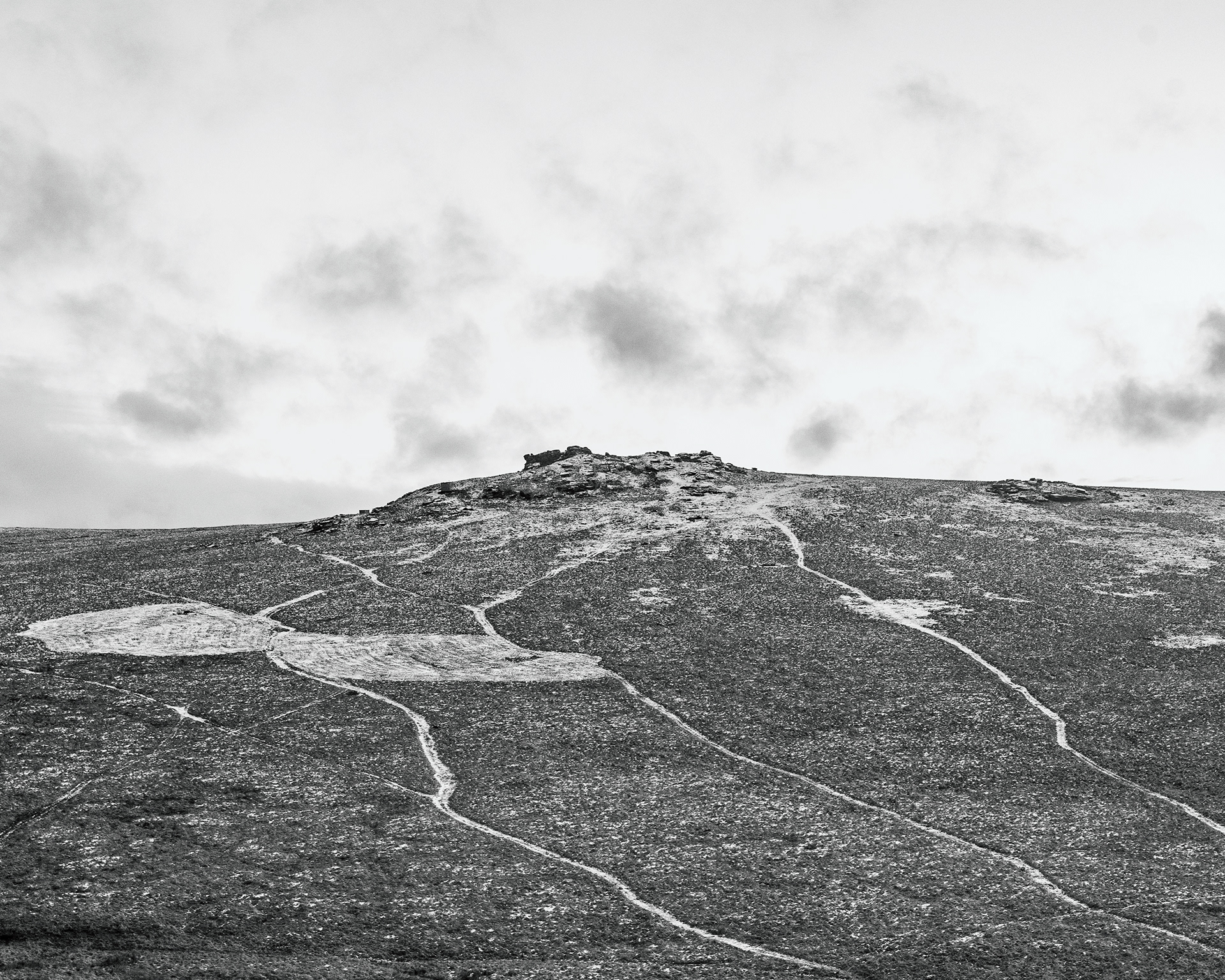
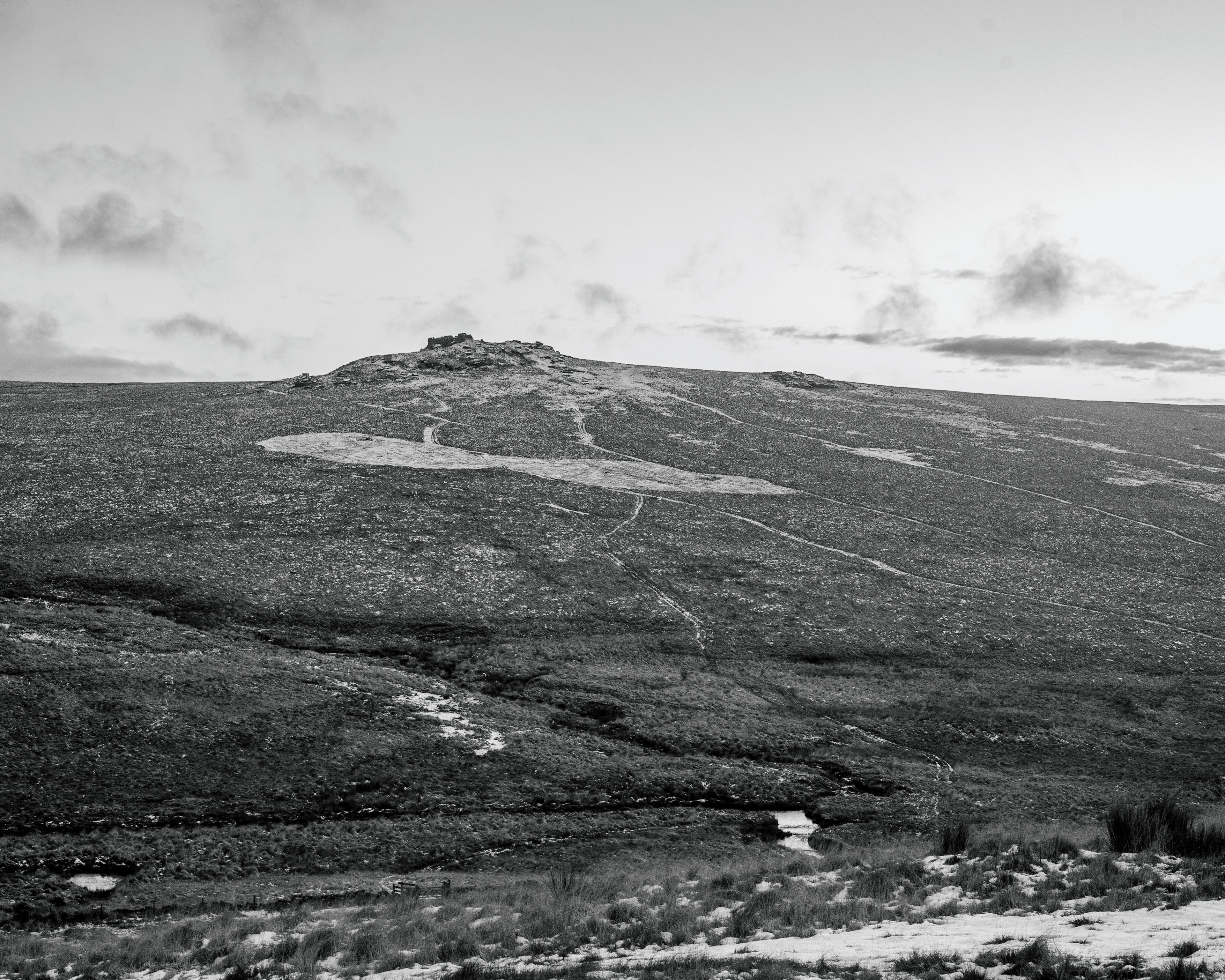
These two shots show the patterns that the snow had left within the landscape. It fascinated me how the small layer of snow collected heavier on the paths and more open bits of the hillside. After collecting research and inspiration from Edward Weston I was looking out for patterns, lines and shapes that had been formed in the snow. This leads the viewer around the image with the lines and shapes that have been formed.
Medium Format Photographs
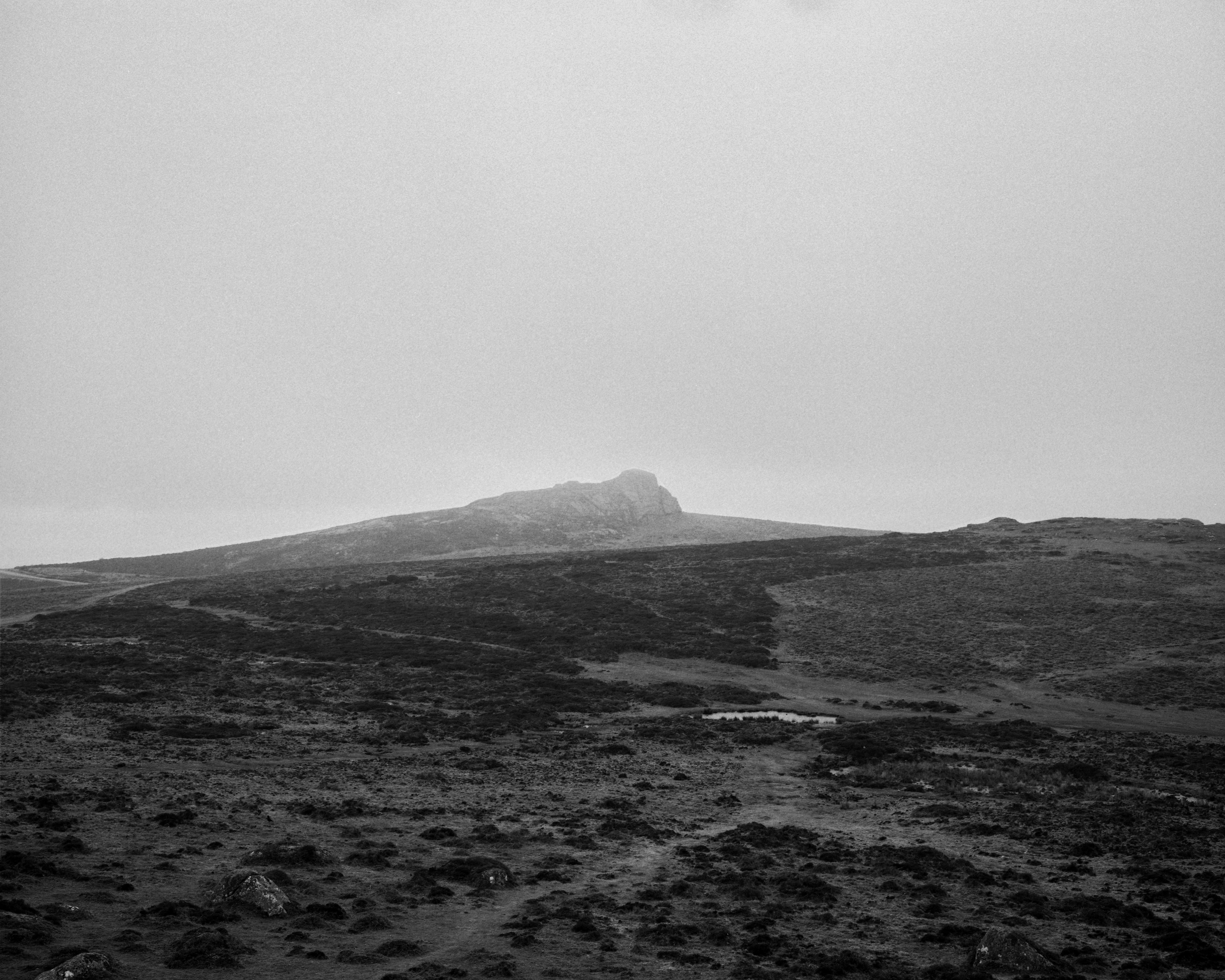
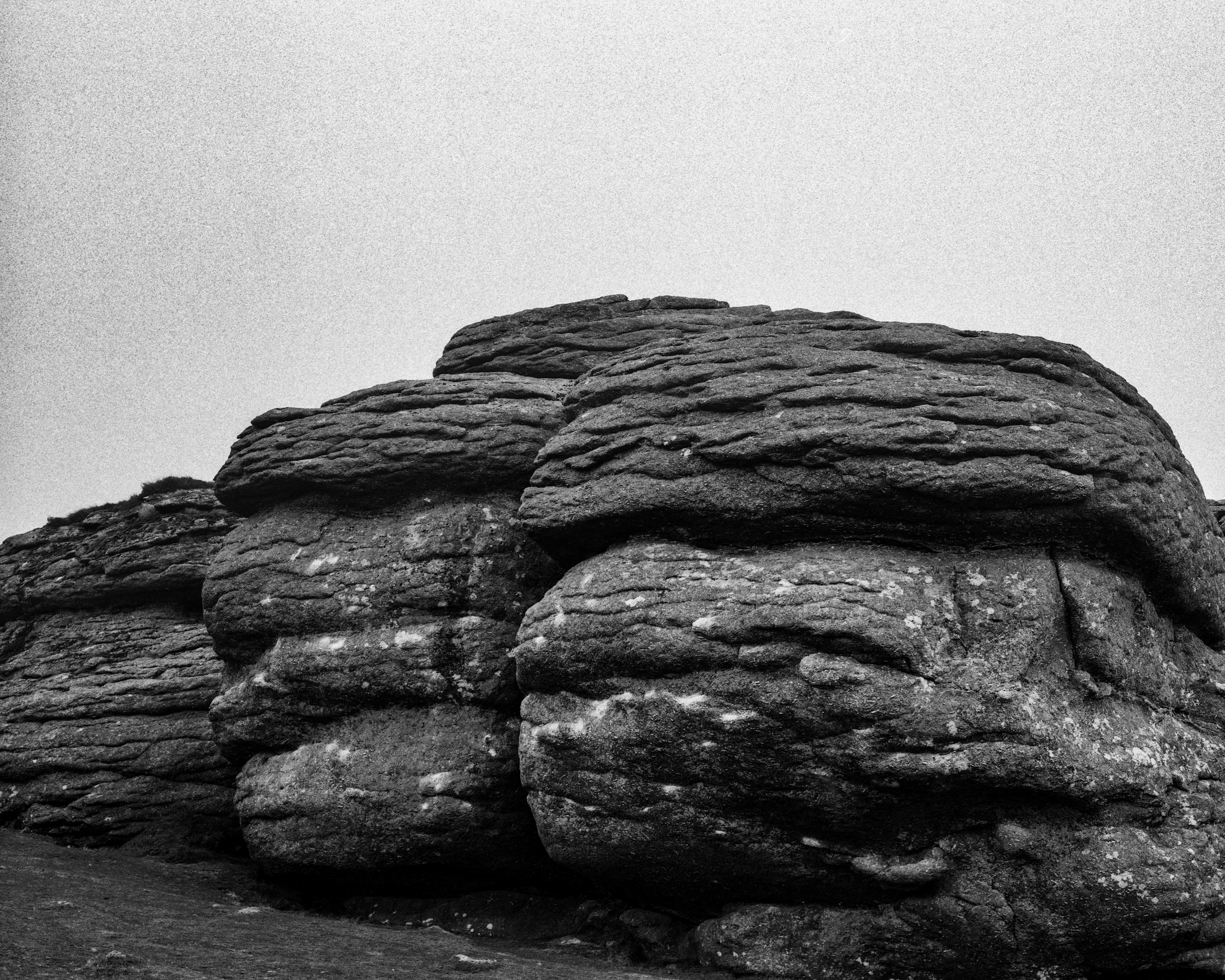
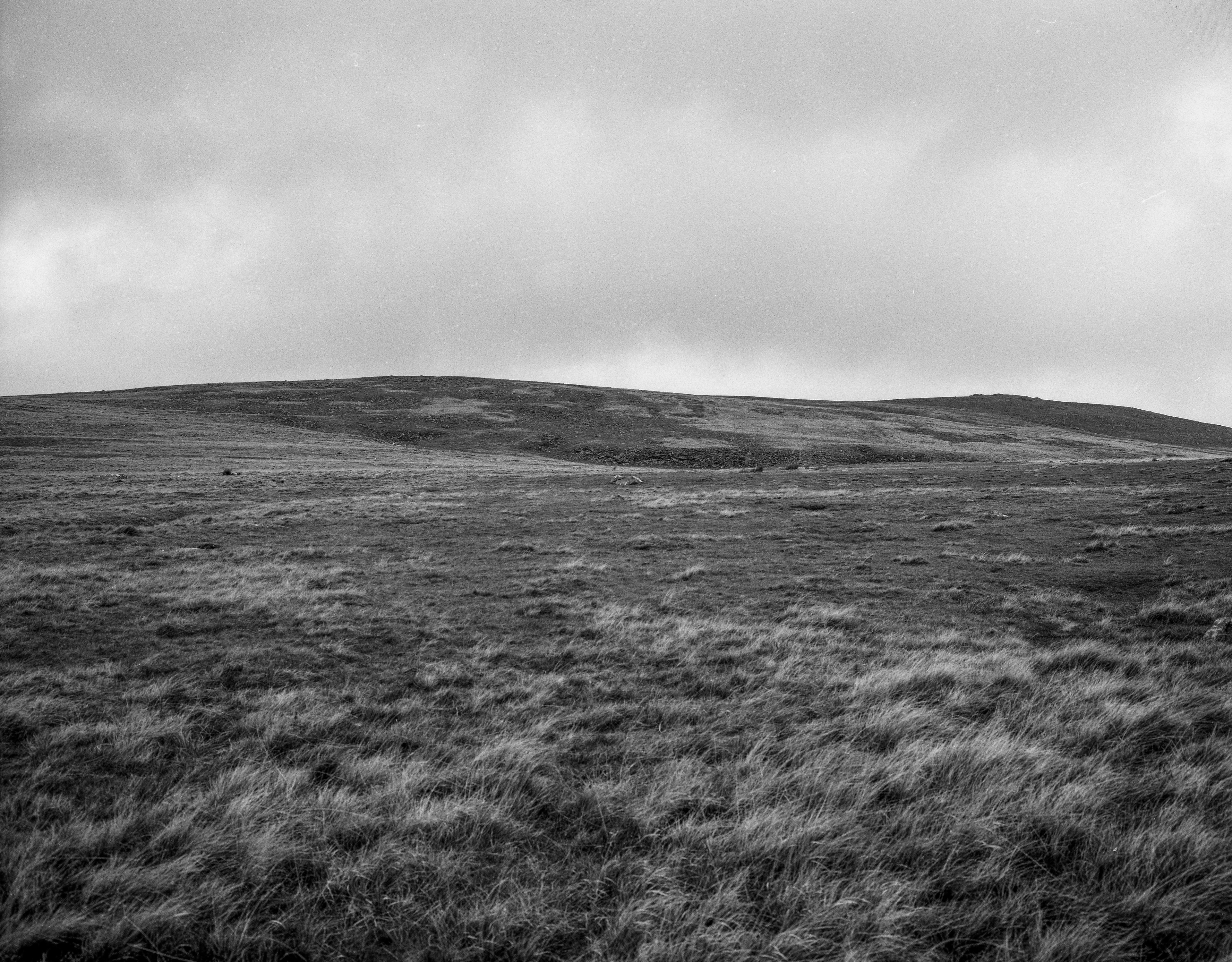
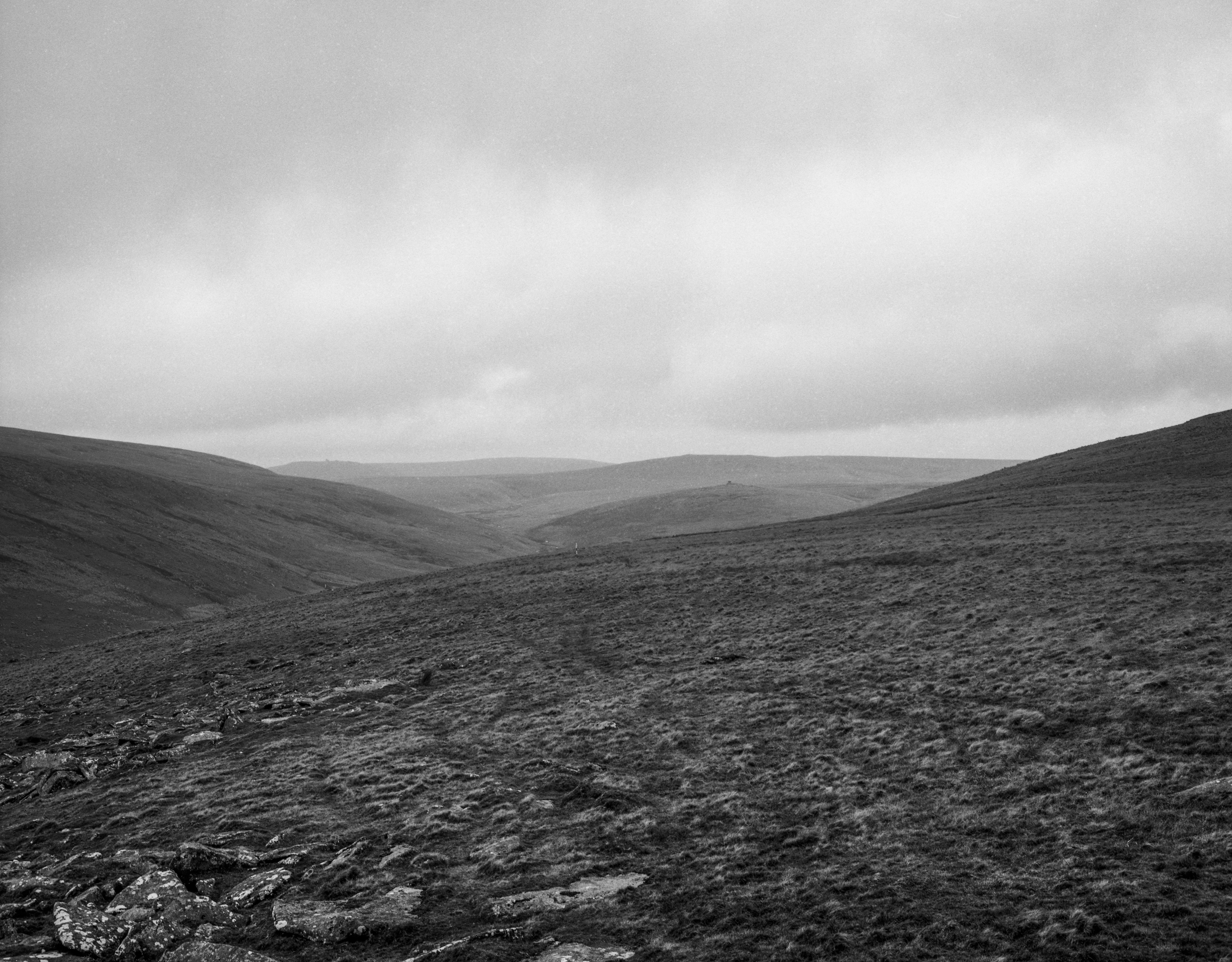
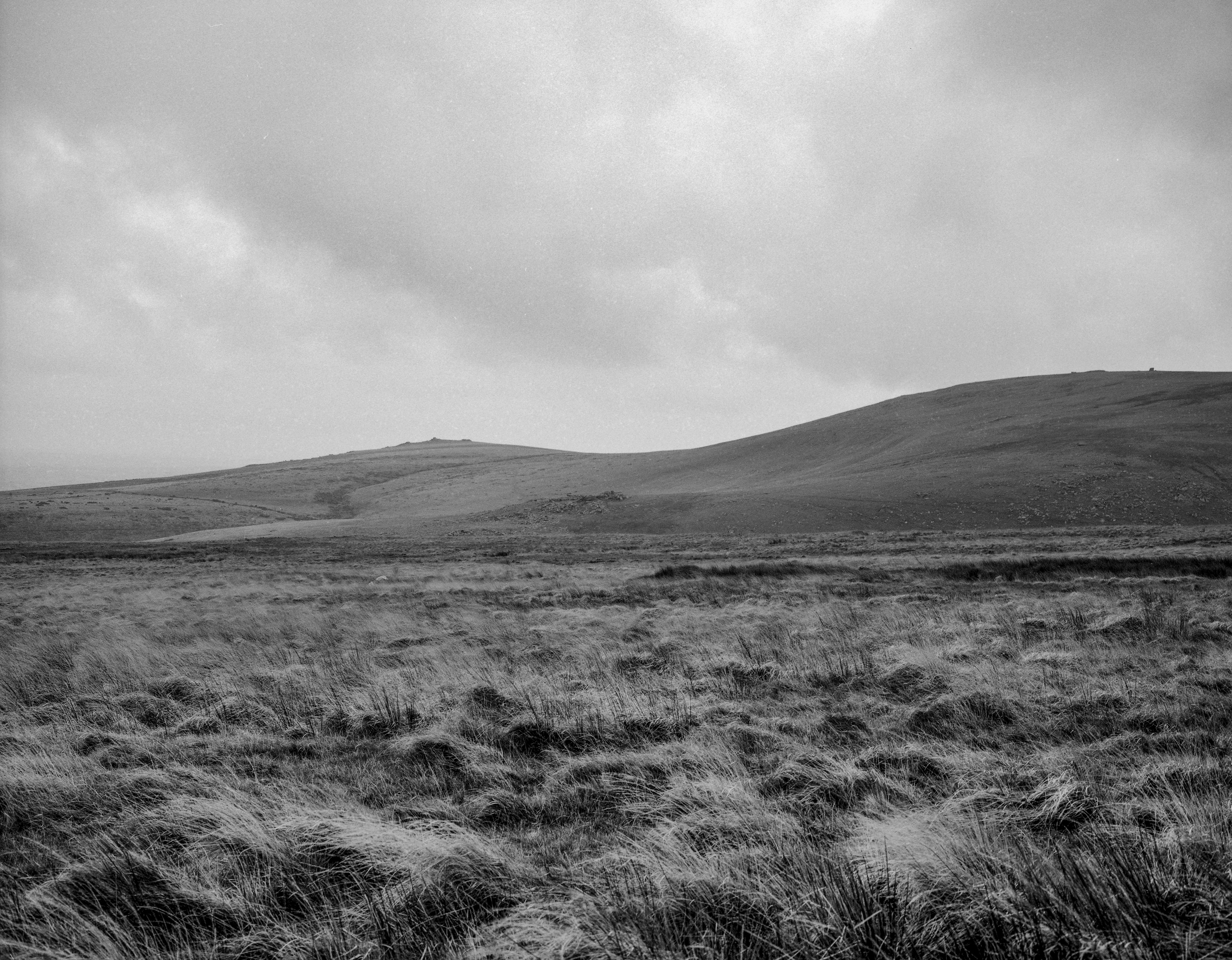
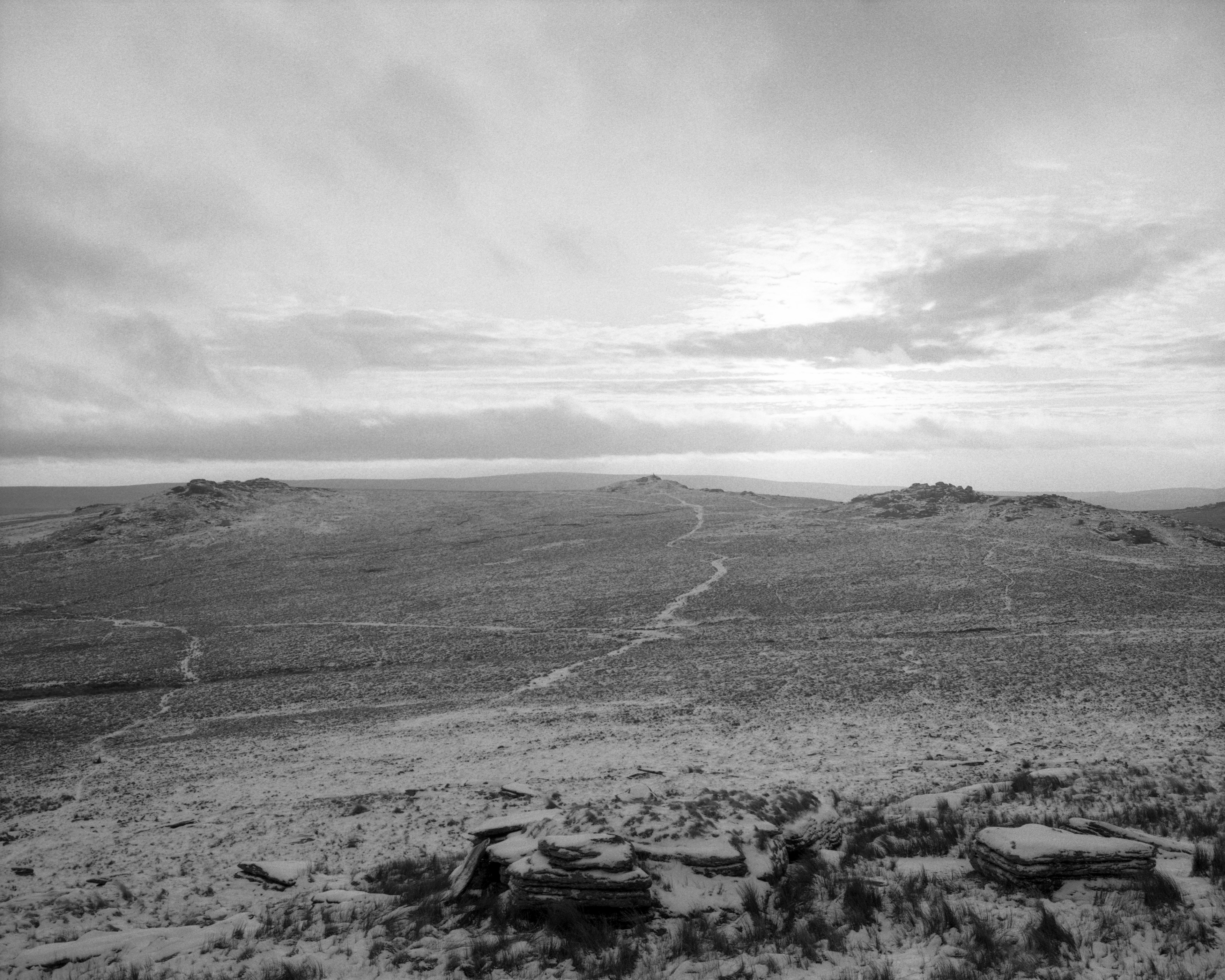
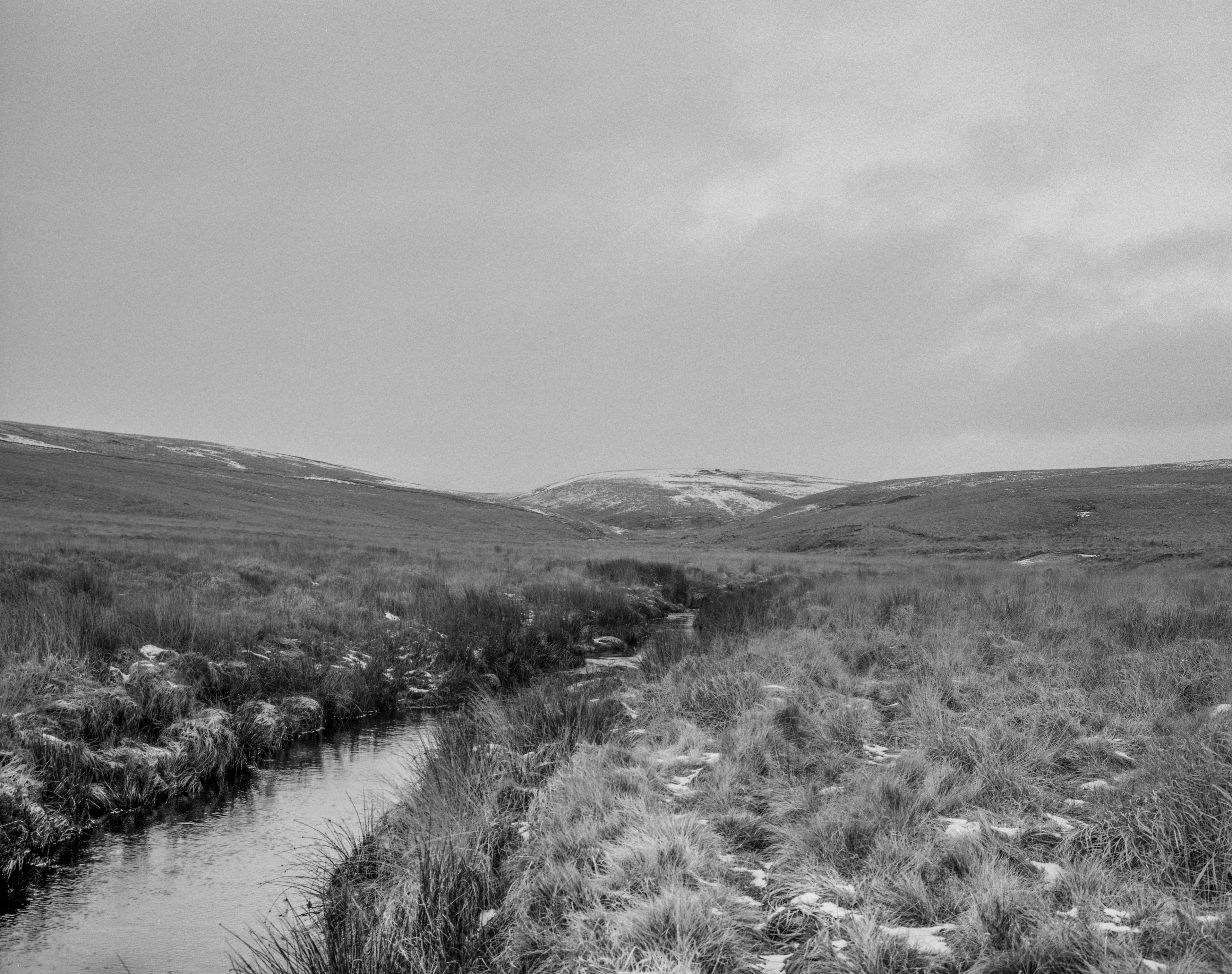
After developing and scanning my negatives I was quite happy with the photographs that I had made. I found the process quite therapeutic and exciting to see what I was able to capture while on the Moors. The tones and textures of the film are much softer compared to the digital images that I took at the same time. This softness reduces the amount of contrast in the photographs and I think produced a safe image for the viewer to connect with on a silent and peaceful level.
This is one of the images that will make it into the final selection of this body of work. I shot this from the back of Haytor on a rather overcast/ low cloud day. One of the reasons why I like it is because Haytor is a widely recognised and visited Tor on Dartmoor. However from the angle that I have captured it from, it might take someone who knows the location a while to know which Tor has been photographed. The low mist also hides the top of the large granite rock which almost dissolves into the sky that is behind it. The connection between the solid rock and the thin air is close which juxtaposes the contrast that the foreground of the photograph brings. There are lines moving in the whole images which can easily be used a path for the viewer to navigate through the photograph. This takes them to the centre focus of the photograph which is the Tor. The lack of depth of field allows for a simple composition, one that is almost 2D which, with the simple tones of Ilford HP5 Plus which I feel gives the image contentment and simplicity.
The development of my Landscape images
First Few Landscape shoots
Photographing while on long hikes
Beginning to simplify my images
Currently only shooting digital
Inspiration from Edward Weston
And Nicolas White
Slowing my process down
Shooting on medium format film on a tripod
Some final images selected from this body of work.
Here is the journey that I have gone through with my landscape images during this body of work. I don’t think they have developed as much as the seascape images as I would say that my landscape photography is one of the strongest aspects of my practice. However, the ideas and concepts that I have been focusing on throughout the body of work have developed and refined to focus on the thought of silence. Throughout this project, I have simplified the compositions that I have framed on Dartmoor to allow the viewer to focus on the textures in the foreground of the images. Placing the horizon line in the centre of most of the photographs which locates the relationship with the earth and the sky drawing the viewer to a visual silence in the image.
When Is started shooting on medium format film I began to slow down my process and put more consideration into the frames I was capturing. Going forward with my landscape photography I would like to shoot on more film and take the step up to large format.